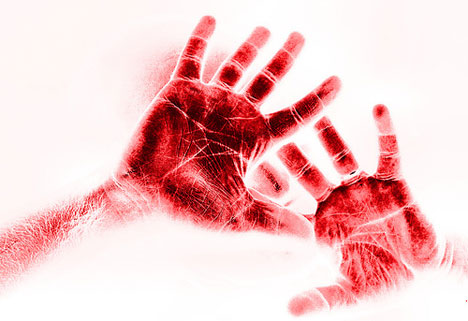Q&A: Discerning the Body
What is the referent of “body of Christ” in 1 Corinthians 11:29?
“For anyone who eats and drinks without discerning the body eats and drinks judgment on himself.”
What is the referent of “body of Christ” in 1 Corinthians 11:29?
“For anyone who eats and drinks without discerning the body eats and drinks judgment on himself.”
“Picasso did not paint for the eyes but for the gut. He painted for the gut that the eyes might be opened.”
One only has to compare a portrait of Picasso’s wife to that of one his lovers to prove that his strange perspective on reality worked from the inside out. What we feel as we observe his works is what he feels about his subjects as he paints them. The spirit and desire which animate man and beast not only move flesh but, in Picasso’s world, distort reality. Time and history without fail reveal the true character of objects, people and ideologies. A Picasso is often the exterior of a person or event shaped or distorted by the spirit and emotion within. It is a history in a single frame, an X ray that discovers not the bones but the heart. Emotional reality is revealed in shape and color. In these cases, his subjects are possibly “ethical nudes.”
This post has been slain and resurrected for inclusion in my 2015 book of essays, Inquietude.
Strange Fire
We’ve reach the central “cycle” of the book of Numbers, the attempt by Balak to destroy Israel. To the unbeliever, it is a story about a talking donkey. For believers, it is a story about a wicked prophet and a carnal people. For those with a wide angle “Bible Matrix” lens, the entire landscape suddenly comes into focus as something familiar and terrifying.
“You are beautiful as Tirzah, my love, lovely as Jerusalem, awesome as an army with banners.” (Songs 6:4)
An online friend recently questioned the repetition found in Numbers 7. The offerings of each tribe are identical, yet each is listed in full. Surely, this was a waste of expensive parchment? Architecture is important to God, no less literary architecture, and it seems to me that the “fullness” of the Offertory in chapter 7 is the result—or the liturgical response, to the military “forming” of Israel in chapter 2.
“Now therefore fear the Lord (T)
and serve him in sincerity and in faithfulness. (H)
Put away the gods that your fathers served (E)
beyond the River and in Egypt, (O)
and serve the Lord.” (S)
Joshua 24:14
Israel famously wandered in the wilderness for forty years. They were tested, offered as a sacrifice and refined with the holy fire of the Law of Moses. This “threshing” process appears at the centre of the Bible Matrix. It is pictured as the time of harvest (Pentecost – the giving of the Law), and as the burning eyes of the Lampstand watching over Israel (sun, moon and five visible planets). In the Covenant pattern it is the “Ethics,” the bit where God lays out the rules for success. Threshing is also a biblical euphemism for sexual relations. At this point, under the Lawful eyes of God, Israel is either shown to be a faithful bride or an adulteress. Is the fire of her desire true or “strange” (foreign). We can see this pattern in James 1:15. It is a sick parody of the Covenant process because it begins with a “false word.”
[This post has been refined and included in Sweet Counsel: Essays to Brighten the Eyes.]
Continue reading

“Conservative theologians have bravely held the fort like the guardians of heaven. Unfortunately, when it comes to biblical interpretation, they are boring as hell.“
Paul Washer recently tweeted: “The measure of biblical truth that we have grasped is not determined by the size of our heads, but the breadth of our hearts.”
The divide between the head and the heart is an issue of integrity, of holiness. But even within the realm of “head knowledge,” the intellectual level of Biblical interpretation, there is a sort of left brain/right brain divide. The issue here is not one of holiness. It is one of “intellectual sex.”
[This post has been refined and included in Sweet Counsel: Essays to Brighten the Eyes.]
Continue reading
Have been chewing on Covenant renewal in Communion a lot. I’m starting to think the emphasis on the Table is not so much nourishment as resurrection and commission under oath.
“And the times of this ignorance God winked at;
but now commandeth all men every where to repent…” Acts 17:30
Reading the Bible without an understanding of Creational and Covenant structures is like watching test cricket without knowing the rules. It’s not unusual for even the best commentators to be distracted by something as inconsequential as a lost seagull. But every moment is part of a bigger picture. Isaiah can seem tedious at times, but it’s a long game. Let’s look at Isaiah 4:2-6, which relates the purging of exiled Israel to the jealous inspection in Numbers 5. In this case, she comes up trumps.
The Mosaic Tabernacle was silent. It was a place of mysterious words, dark sayings, carried out in secret. Eventually, it was violated, torn apart. It was the body of death, with sacrifices of blood carried out by Israelite priests. Like circumcision, it was a place of silent witness (the tablets) and the cutting off of the old leaven. (The fact that Hannah was not drunk makes this her holy war – the OC ministers of death could not drink wine in God’s presence.)
The tent was resurrected as the Tabernacle of David, an open place of dancing and loud music, with a new body of worshippers, both Jews and Gentiles. It was a new body of life, the flesh and the blood reunited in an impossible hybrid, with sacrifices of praise. [1] Like baptism, it was a place of reunion and bold testimony.
Hannah’s prayer was silent. She mouthed the words with a despair that felt like death. But after the miraculous delivery of the desired son, (offered to the Tabernacle as a symbolic ascension) she prayed aloud. Continue reading

These six things the LORD hates, Yes, seven are an abomination to Him:
…..A proud look,
……….A lying tongue,
……………Hands that shed innocent blood,
………………..A heart that devises wicked plans,
……………Feet that are swift in running to evil,
……….A false witness who speaks lies,
…..And one who sows discord among brethren. (Proverbs 6: 6-19)
Although Revelation describes two women, there was really only one. Solomon dealt with two prostitutes who lived in the same house. What Revelation does is cut the prostitute in two. At Atonement, Rahab was separated from Jericho; Mary Magdalene was delivered of her seven demons. Peter Leithart writes:
“Mary Magdalene functions in the same way in John’s gospel. She had seven demons (like Israel in Jesus’ parable!), but by the end of the book has become a new Eve, recognising Jesus as the New Adam in the garden of the resurrection. Since she is new Eve, it is entirely appropriate that Jesus call her ‘Woman’.” [1]